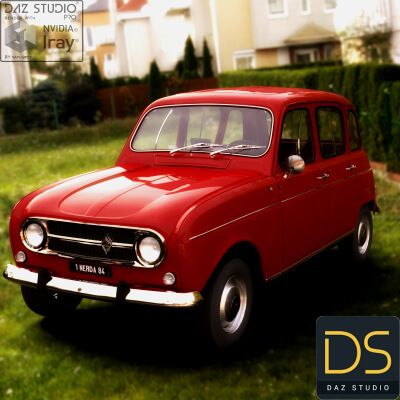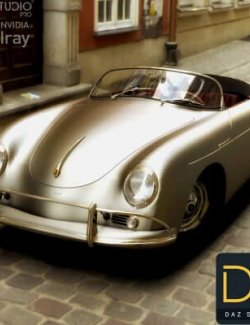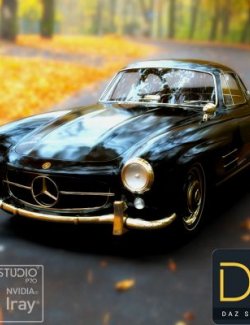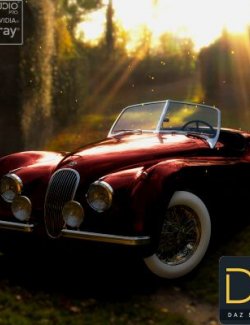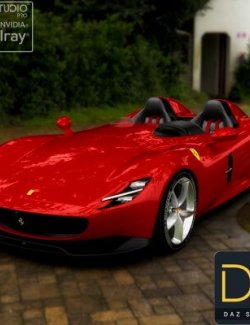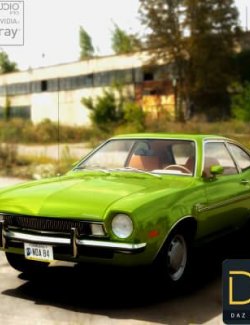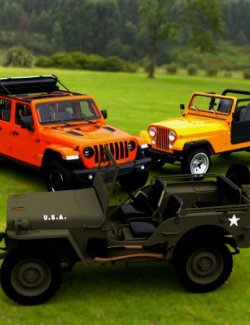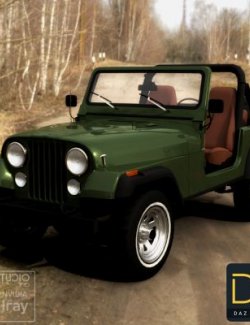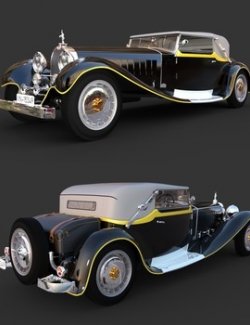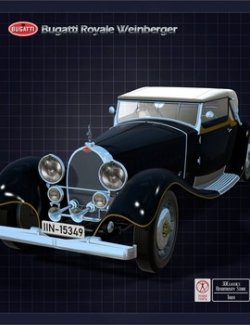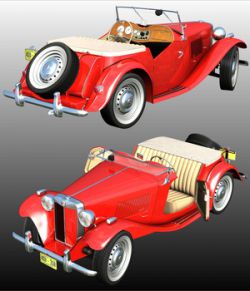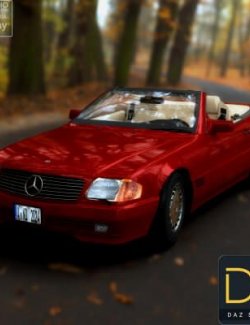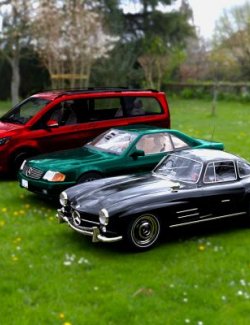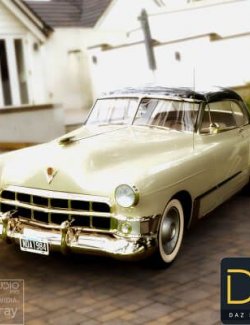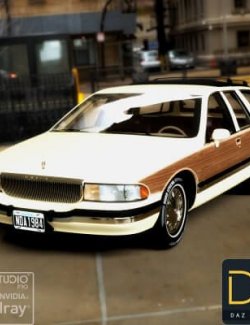The Renault 4, or R4 in short (and 4L, pronounced "Quatrelle", in French), is an economy car built by the French company Renault from 1961 to 1994. Although the Renault 4 was first marketed as a short estate or wagon, its minimal rear overhang, and its top-hinged, single-piece tail-gate made it the world's first mass-produced hatchback car, as well as the first time Renault had used a front-wheel-drive layout in a family car.[nb 1] A bare-bones, entry-level Renault 3, or R3 was also offered in 1961/1962.
The car was launched at a time when several decades of economic stagnation were giving way to growing prosperity and surging car ownership in France. The first million cars were produced by 1 February 1966, less than four and a half years after launch; eventually over eight million were built, making the Renault 4 a commercial success because of the timing of its introduction and the merits of its design. In early 2020, the 33-year production run of the Renault 4 was counted as the seventeenth most long-lived single generation car in history
The Renault 4 was Renault's response to the 1948 Citro n 2CV. Renault was able to review the advantages and disadvantages of the 2CV design. The Citro n had made motoring available to low-income people in France, and especially to farmers and other people in rural areas, for whom the car was as much a working tool as personal transport. The 2CV had been designed in the 1930s for use in the French countryside where the road network was poor - speed was not a requirement but a good ride, useful rough-terrain ability, a versatile body for load carrying, and economy and simplicity of operation were its key considerations. However, by the late 1950s, the 2CV was becoming outdated. Rural roads in France were improved and the national system of autoroutes was being developed. Agriculture was becoming more mechanized with fewer smallholdings and family farms for which the 2CV was designed. The Citro n had also proved popular with people living in towns and cities as affordable, economical transport but the 2CV's rural design brief made it less than ideal as a city car and, despite improvements, the late-1950s 2CV had a top speed of just 70 km/h (43 mph). Its air-cooled two-cylinder engine was reliable and economical but noisy and offered poor performance. The 2CV's suspension gave it an excellent ride and good grip and handling but was mechanically complex with many moving parts that required regular maintenance and lubrication at intervals as low as every 1000 miles (1600km). With its roots in the 1930s, the 2CV's styling was also outdated and, with its separate wing/fenders, had a relatively narrow and cramped body for its overall footprint. While the Citro n had been designed during the Great Depression when money was tight and living standards were relatively low, by the 1960s the French economy was growing and people would be able to afford a more modern, refined, and less utilitarian small car.
In early 1956, Renault Chairman Pierre Dreyfus launched this new project: designing a new model to replace the rear engined 4CV and compete against the Citro n 2CV that would become an everyman's car, capable of satisfying the needs of most consumers. It would be a family car, a woman's car, a farmer's car, or a city car.
The Renault 4 shared many design traits with the older Citro n 2CV to allow it to fulfill the same role as a versatile utility car, especially for people in rural France and other parts of the world with poor roads. It had a large structural platform with a separate body. It had front-wheel drive, long-travel fully independent suspension, and Rack and pinion steering. It had a simple body with minimal equipment, a large space for cargo or luggage, and 'deckchair' seats which could be easily removed. However, the Renault 4 updated this basic concept with a larger four-cylinder water-cooled engine with a sealed cooling system offering much better refinement and performance than the contemporary 2CV, with a top speed of over 104 km/h (65 mph). The suspension consisted of torsion bars which required no regular maintenance. The boxy full-width body offered more space for both passengers and luggage than the similar-sized 2CV and the car boasted an early hatchback body for greater practicality.
Renault launched the Renault 3 and the Renault 4 simultaneously in July 1961. The cars shared the same body and most mechanical components, but the R3 was powered by a 603 cc version of the engine while the R4 featured a 747 cc engine. This placed the R3 in the 3CV taxation class while the R4 was in the 4CV class. Maximum power output was rated by Renault as 22.5 hp (16.5 kW) for the R3, and 26.5 or 32 hp (19.5 or 23.5 kW) for the R4, depending on price level and the type of carburettor fitted. Initially the base versions of the R3 and R4 came with a thick C-pillar behind each of the rear doors. Quarter glass was a 400 franc option for the basic R4. The extra visibility increased the weight of the vehicle, but these windows soon became standard for all R4s.
The R3 and R4 were targeted at the Citro n 2CV that employed soft springs and long wheel travel to absorb bumps on rough roads. The Renault 3/4 applied the same approach and two models appeared at the Paris Motor Show in 1961 on a specialized demonstration display that incorporated an irregular rolling road. Visitors could sit inside a car, which remained undisturbed while the suspension absorbed the erratic bumps of the rolling road.In 1962 Renault employed the same display at the Turin Motor Show.
The basic version of the R3 was priced 40 francs below the lowest-priced version of the Citro n 2CV in 1961 and featured painted bumpers and grille, a simplified instrument panel, a single sun visor, no windshield washer, and no interior door trim panels. This trim was also offered with the more powerful R4 engine. The R4L with six side windows, chrome-colored bumper and grille, as well as a less spartan interior cost 400 francs (roughly 8%) more than the R4 with its four side windows. However, as with the Renault 4CV "Service" in 1953, customers shunned the basic model and in October 1962, the Renault R3 was discontinued, along with the most basic version of the Renault 4.
A "Super" version (branded "de Luxe" in some export markets) with opening rear quarter-light windows and extra trim was also offered.The de Luxe and Super versions of the R4L received a version of the engine from the Renault Dauphine giving them an engine capacity of 845 cc. After the withdrawal of the 603 cc engined R3, the 747 cc R4 model continued to be listed with an entry-level recommended retail price, but the slightly larger-engined L versions were more popular. By 1965, Renault had removed the extra "R" from their model names: the Renault R4L thus became the Renault 4L.
Early versions of the Renault R4 used engines and transmissions from the Renault 4CV. The original design brief called for an engine size between 600 cc and 700 cc, but there was no consensus as to whether to use a four-cylinder unit or to follow Citro n with a two-cylinder unit. With Volkswagen rapidly growing market share across Europe and North America, Renault also gave serious consideration to an air-cooled boxer motor option for the forthcoming R3/R4. However, using the existing water-cooled unit from the 4CV was a solution, especially in view of the extended period of teething troubles encountered by the Renault Fr gate, which was then Renault's most recent attempt to develop an innovative powerplant. The existing engines were larger than that specified by management for the new 4CV, but the automaker addressed this by reducing the bore so that the overall capacity of the base engine for the new R3 worked out to be 603 cc, comfortably at the lower end of the required 600 700 cc range. However, since Renault already produced the 747 cc version of the engine that was well proven in the 4CV, it made sense to use this as well in what would in many respects be the older car's successor. Therefore, in 1961, the R3 had a 49 mm bore and 80 mm stroke, while the R4 received the 54.5 mm 80 mm existing engine.
Moving the engine from the rear of the 4CV to the front of the new model involved significant planning: design changes to the unit were introduced as part of the process. The inlet manifold was now a steel casting whereas on the 4CV it had been constructed of a light-weight alloy: this was driven by cost considerations now that aluminum was not so inexpensive as it had been fifteen years earlier. Renault also took the opportunity to introduce a feature which subsequently became mainstream. Renault also designed a "sealed-for-life" cooling system, supported by a small expansion tank on the right side of the engine bay. The cooling system contained antifreeze intended to enable operation without topping up or other intervention throughout a car's life provided ambient temperatures below -40 C were avoided
Product Description:
Thank you very much to have bought this pack!!
------------
System Requirements:
PC / MAC 0SX
Product Requirements:
Daz Studio
==========
DAZ
This pack for Daz Studio contains a Renault 4L 1969 with lights and textures included.
Let your imagination run wild and create wonderful scenarios with this stuff.
Have Fun!!
Mesh data
vertices: 221.974
tri ngulos: 257.416
